Transforming Care Home Management: The Shift from Paper-Based to Automated Systems

Our Care Home Management System
The management of care homes is a complex and multifaceted task that involves caring for residents, complying with regulations, and ensuring the financial stability of the facility. In recent years, there has been a significant shift in the way care homes are managed, with a growing number of facilities moving away from traditional paper-based systems to embrace technology-driven solutions. This transition not only streamlines operations but also has a profound impact on care home revenue. Let’s explore the statistics surrounding care home management systems and how technology supports management, ultimately increasing care home revenue.
Statistics: The Transition from Paper-Based to Automated Systems
The adoption of technology in care home management has been steadily on the rise. While paper-based systems were once the norm, they are gradually being phased out in favor of more efficient and comprehensive automated solutions. Here are some statistics that shed light on this transition:
- Percentage of Care Homes Using Paper-Based Systems: In the past, paper-based management systems were prevalent in the care home industry. However, recent data suggests that only around 30% of care homes continue to rely on purely paper-based systems for their day-to-day operations.
- Percentage of Care Homes with Partial Automation: A significant number of care homes have taken a hybrid approach, combining paper and automated systems. This approach, adopted by approximately 40% of care homes, signifies an ongoing transition toward fully automated solutions.
- Percentage of Care Homes with Fully Automated Systems: The remaining 30% of care homes have embraced fully automated management systems, which streamline various aspects of care home operations, from resident care to financial management.
Technology’s Role in Supporting Care Home Management
The shift towards automation in care home management is driven by the numerous benefits that technology offers. Here are some ways in which technology supports care home management:
- Improved Resident Care: Automated systems provide quick access to resident information, including medical histories, medication schedules, and dietary preferences. This ensures that caregivers can offer more personalised and effective care to residents.
- Enhanced Administrative Efficiency: Digital record-keeping and automated scheduling reduce the administrative burden on care home staff. Tasks such as employee scheduling and billing become more streamlined and error-free.
- Compliance and Reporting: Technology allows care homes to easily track and maintain compliance with industry regulations. Automated reporting and data analysis tools help ensure that care homes are meeting standards and can swiftly address any issues.
- Enhanced Communication: Automation enables improved communication between staff, residents, and their families. Online portals and mobile apps allow for real-time updates on resident well-being, fostering transparency and trust.
- Financial Management: Technology plays a significant role in optimizing financial management. Automated billing, payroll, and expense tracking systems help reduce errors and increase revenue by streamlining financial operations.
Increasing Care Home Revenue through Automation
The adoption of technology in care home management not only improves the quality of care but also has a direct impact on revenue. Here’s how:
- Billing and Revenue Cycle Management: Automated timesheet systems ensure accurate and timely invoicing for services provided, reducing the risk of missed payments and increasing revenue collection.
- Reduced Administrative Costs: Automation reduces the time and resources spent on administrative tasks, freeing up staff to focus on resident care and other revenue-generating activities.
- Data-Driven Decision-Making via reporting: Technology provides access to valuable data and analytics, enabling care homes to make informed decisions that lead to improved operational efficiency and, ultimately, increased revenue.
Conclusion
The transition from paper-based management systems to fully automated solutions is a positive and transformative development in the care home industry. The statistics indicate a growing adoption of technology, which significantly enhances the management of care homes and, in turn, boosts revenue. As care homes continue to embrace technology-driven solutions, residents, their families, and the facilities themselves stand to benefit from improved care, increased efficiency, and sustainable financial growth. This shift represents a promising future for care home management and the well-being of those it serves.

